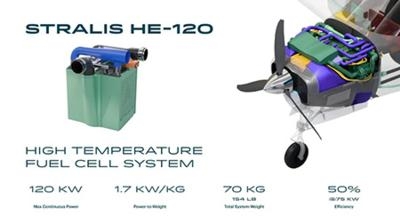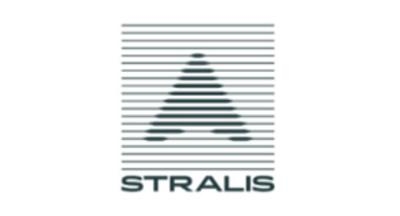Developing A Brave New World
By Gene Yarbrough
Stralis Aircraft is at the forefront of a burgeoning industry: high-performance, hydrogen-electric aviation, according to Stralis Aircraft. Their innovative approach centers around developing next-generation, high-temperature proton-exchange membrane (HTPEM) fuel cells, a technology poised to revolutionize not only aircraft but also various heavy-duty sectors like long-haul trucking and mining.

The company's core innovation lies in its patent-pending fuel cell technology, which boasts a remarkable six-fold weight reduction compared to current-generation fuel cells used in other applications like cars and trucks. This significant weight advantage is a game-changer for aircraft design, allowing for longer ranges and greater payload capacities in hydrogen-electric planes.
Stralis claims their hydrogen-electric aircraft will be able to fly ten times farther than battery-electric alternatives and operate at a 50% lower cost than fossil fuel-powered planes.
Stralis's technology is also remarkably efficient, achieving 50% efficiency during cruise, outperforming the most efficient turbofan engines in the world, according to Fuel Cells Works. This efficiency, coupled with their unique high-temperature design, enables them to unlock the potential for truly practical and sustainable hydrogen-electric flight.
The company recently completed a significant milestone: 1,000 hours of testing on its lightweight hydrogen stack, paving the way for larger systems. Stralis's modular approach aims to deliver flexible fuel cell solutions ranging from 120 kW up to 960 kW, adaptable for diverse power requirements across multiple industries.
While optimized for aviation, the scalability and efficiency of Stralis's fuel cell systems extend their potential applications beyond aircraft. The company foresees its technology powering long-range drones, heavy-duty trucks, ships, and mining vehicles. This broad applicability highlights the transformative potential of their lightweight and efficient fuel cells across various transportation and industrial sectors, contributing to reduced emissions and increased energy efficiency.
The aviation industry's commitment to net-zero emissions by 2050 underscores the urgency for practical and scalable solutions like those offered by Stralis, according to Fuel Cells Works. Stralis has already garnered significant interest, securing letters of intent from airlines worldwide and receiving government grants to accelerate development.

Their collaboration with institutions and companies like CQ University and Fabrum for hydrogen storage and fuel systems further strengthens their position in bringing this technology to market. With promising test results and strong partnerships, Stralis's fuel cell systems are poised to play a crucial role in the transition to a hydrogen-powered future for transportation and beyond.
Stralis has demonstrated they intend to be a key player in the hydrogen powered aviation arena, key accomplishments are:
- Stralis Aircraft has acquired two Bonanza A36 airframes, affectionately named "Bonnie" and "Clyde," to test their hydrogen-electric propulsion system.
- "Clyde," the ground-based testbed, successfully ran the propulsion system using hydrogen in December 2024 at Brisbane International Airport.
- The goal for "Bonnie" is to conduct the first hydrogen-electric Bonanza flight in the third quarter of 2025 in Australia. This could potentially be the first piloted hydrogen-electric flight in the Southern Hemisphere.
- California-based Aviate Enterprises has partnered with Stralis and has agreed to be the U.S. launch customer for a hydrogen-electric Bonanza, with the announcement made at EAA AirVenture in Oshkosh, Wisconsin in July 2025.
 NTSB Final Report: Cory Green Kitfox Series 7 STI
NTSB Final Report: Cory Green Kitfox Series 7 STI ANN FAQ: Submit a News Story!
ANN FAQ: Submit a News Story! ANN's Daily Aero-Linx (07.30.25)
ANN's Daily Aero-Linx (07.30.25) ANN's Daily Aero-Term (07.30.25): Primary Radar
ANN's Daily Aero-Term (07.30.25): Primary Radar Aero-News: Quote of the Day (07.31.25)
Aero-News: Quote of the Day (07.31.25)




